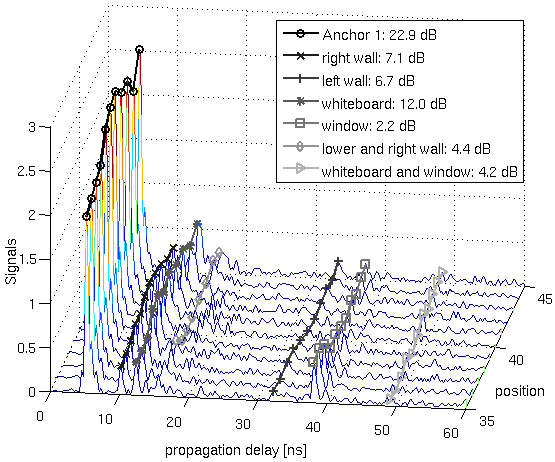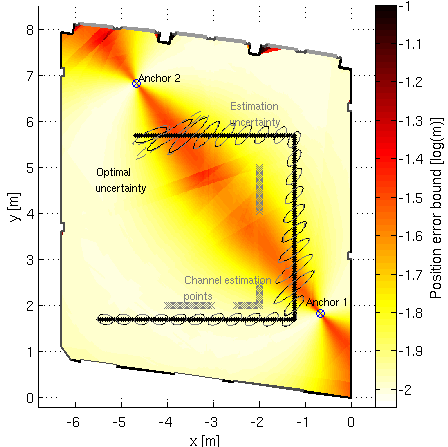MINT - Multipath-assisted Indoor Navigation and Tracking
- Period
- 2015 — 2016
- Funding
- Austria Wirtschaftsservice Gesellschaft mbH, aws; BMWFW (Fed. Ministry of Science, Research and Economy)
- Research Areas
- Contact


The project MINT investigates an RF-based localization and tracking system intended for indoor use. The method to be investigated, previously proposed by our group, exploits information from reflected multipath components, assuming prior knowledge of a floor plan. This approach has been termed “multipath-assisted indoor navigation and tracking (MINT)”. The project evaluates the practical feasibility of the MINT approach.
Overview
The MINT concept allows for an optimal combination of reflected signal components in an indoor environment. Optimality is achieved by a method that can automatically estimate (either in a dedicated training phase or online during the tracking) the uncertainty and reliability of different components in the radio signal. In this way, localization does not suffer from unreliable information caused by harsh propagation conditions, which is often the cause for failure of conventional localization methods.


Left plot shows exemplary signals employed for localization measured in a room. Also shown is the decomposition of the signal into geometrically useful signal components and their reliablity values. In the right plot, these values are used to predict the localization accuracy for the environment. The ellipses depict the (strongly enlarged) uncertainty of the localization, showing that the combination of information is optimal.
Tracking Videos
Two video examples for multipath-assisted tracking at a bandwidth of 2 GHz:
Using only a single anchor: http://www.youtube.com/watch?v=L3LfBLkPhXc
Using two anchors: http://www.youtube.com/watch?v=ROPXXc74IZc
Propagation videos
A video example of the grid measurements in our corridor, showing the measured UWB signals together with the expected specular multipath components is available on Youtube:
Bandwidth 5 GHz: http://www.youtube.com/watch?v=zY9qg8qUCYI
Bandwidth 500 MHz: http://www.youtube.com/watch?v=EvaIplqJe7k
